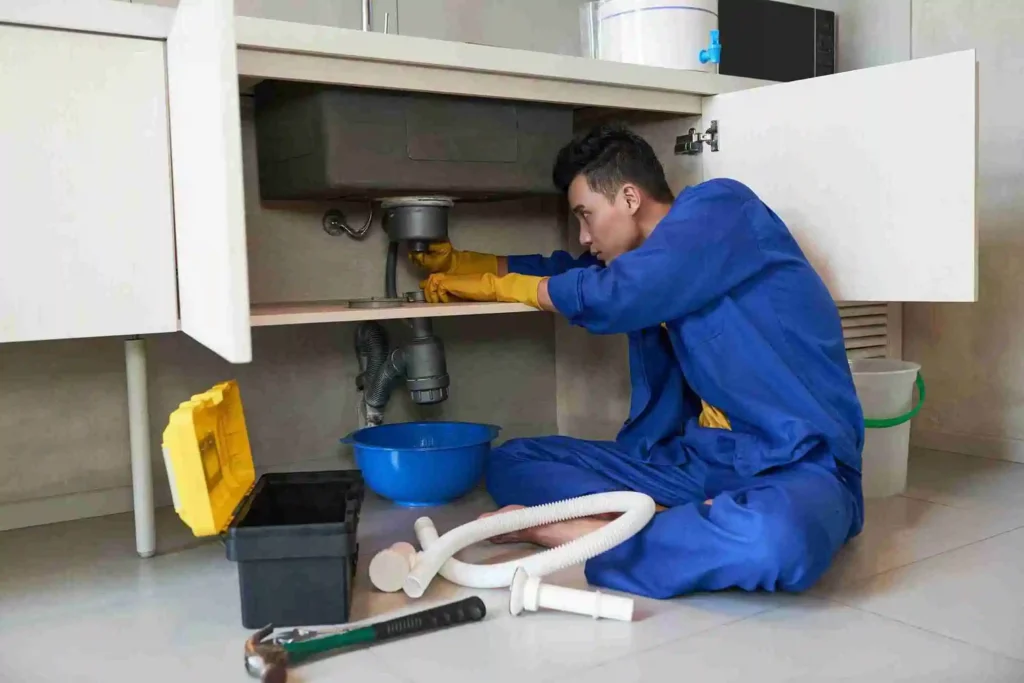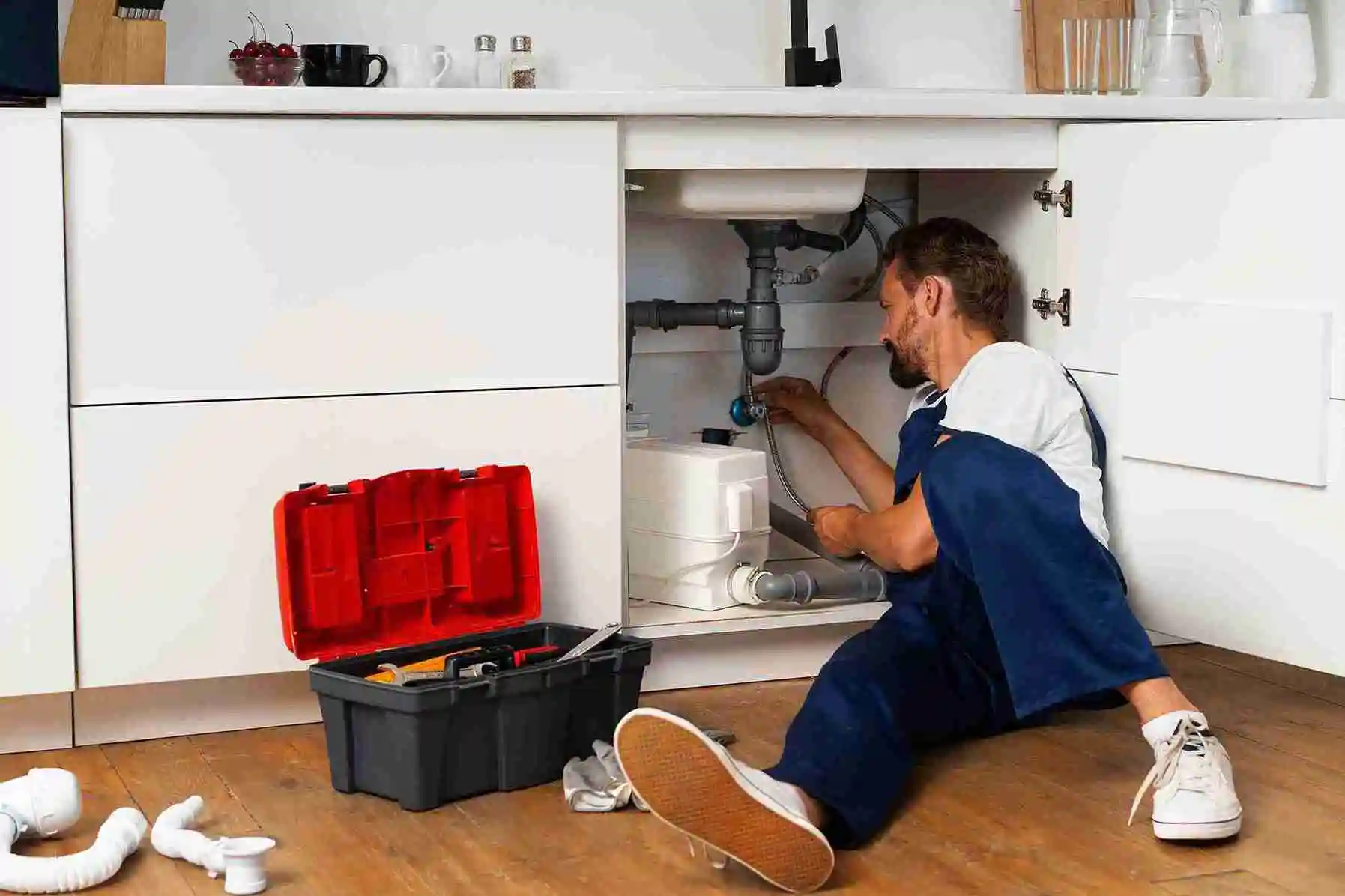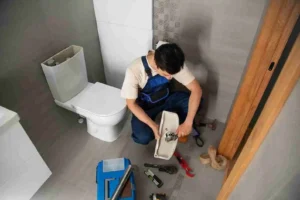When designing a plumbing system for your home, the goal is to make sure waste flows smoothly into the municipal sewer or septic tank. It’s not just about getting rid of the water—your system is a two-way street that keeps everything safe and clean.
One of the most vital components of this system is the p-trap, a fitting that plays a key role in maintaining your plumbing’s efficiency. The p-trap serves as a powerful barrier to prevent harmful sewer gas and unpleasant odor from entering your home. It works in harmony with drains in tubs, showers, and sinks to handle the sanitary waste while also ensuring that the air in your home stays fresh.
These plumbing pipes not only carry water away, but they also help keep your plumbing system from becoming clogged or overwhelmed by the constant flow of sewage. So next time you wonder about all those pipes under your sink, just remember that the p-trap is there, making sure your drain system works smoothly without bringing any unwanted smells into your space.
What is a P-Traps and Why is it Important?
A P-trap is a key plumbing component that can be found in homes, particularly under sinks in bathrooms and kitchens. It plays a crucial role in your plumbing system by preventing sewer gases from entering your living space and keeping the drain clear of debris. The trap is typically built of PVC pipe or steel, with exposed plumbing preferring the latter due to its aesthetic appeal.
The U-shaped bend is essential because it holds water, forming a seal that stops harmful gases from rising up through the drain. California Code even requires P-traps for proper plumbing, ensuring the wastewater drainage system functions smoothly in all showers, bathtubs, and even the washing machine.When properly installed, a P-trap can be a lifesaver, helping prevent clogs and blockages in the drain line. If you ever drop something like a wedding ring down the drain, it will often get caught in the bend of the trap instead of traveling deep into the main wastewater drainage system.
While S-traps are no longer recommended and are even prohibited under the Uniform Plumbing Code, P-traps remain the best option for keeping your plumbing efficient and odor-free. If you encounter any problems with your P-trap, it’s always a good idea to call in professional plumbers who can easily service and clear any obstruction using a pipe snake or by tightening the nylon connectors with a plastic nut.
What Is the Purpose of a P-Traps?
The P-trap is an essential part of your plumbing system that serves a few vital functions:
- It helps to trap solids that can otherwise cause a clog in the sewer line or drain.
- It holds water to create a barrier that stops sewer gases from entering your home, preventing harmful and unpleasant smells.
- The P-trap ensures compliance with plumbing codes, as it is required where wastewater is discharged into a drain-waste-vent system.
Having worked on various plumbing projects, I can say that the P-trap is often overlooked, but it’s one of those elements that truly saves your plumbing from costly repairs. When properly installed, it ensures that the flow of wastewater is efficient and that blockages are less likely to happen. This simple yet effective system is essential for preventing sewer gases from backing up into your home, making it an absolute must in any modern plumbing system. Without it, you could be setting yourself up for all sorts of trouble.
How Does a P-Traps Function?
A P-trap is a crucial component in your plumbing system that ensures both water seal and safety. It features a u-shaped bend, often seen beneath sinks, bathtubs, and showers, which plays a vital role in maintaining hygiene and preventing unpleasant issues. The water barrier generated in the bend captures a small amount of water, resulting in a seal.
This seal acts as a protective shield, stopping sewer gas and noxious odors, like the distinct smell of rotten eggs, from entering your home. Without this simple yet effective mechanism, your home would be exposed to potential health risks from poisonous or even explosive sewer gases.When you use a fixture, like a sink or bathtub, the water flows through the P-trap, pushing out old wastewater and ensuring that fresh water replaces it. Over time, small solid particles from washing can get caught in the trap, which could lead to clogs.
Clogs in the P-trap are easier to dislodge than those deeper in the drain line. You can unscrew the fittings or use a drain cleaner or sink plunger to resolve the issue. In cases of severe blockage, a plumber might need to use a pipe snake to clear the drain. Regular maintenance of your P-trap helps prevent blockages, ensuring a smooth flow in your plumbing system.
Different Types of P-Traps
When it comes to p-traps, two materials are most commonly used: brass and polypropylene. Each of these materials has unique properties that make them suitable for different plumbing needs.
- Brass p-traps:
- Chrome plating gives them a dazzling, eye-catching appearance.
- Offers some protection against corrosion, but may corrode over repetitive use.
- Prone to reactions with certain acids, which can weaken the material over time.
- Polypropylene p-traps:
- Made from plastic, which is lightweight and allows for easy assembly and disassembly.
- Resists corrosion better than brass, especially when exposed to acids and harsh chemicals.
- May lack the aesthetic appeal of brass, but offers reliable, long-lasting performance.
Each material has its advantages and disadvantages, and understanding these can help you choose the right one for your specific needs. Whether you prioritize durability or appearance, selecting the right counterpart for your plumbing system will ensure that your p-trap functions effectively for years to come.

How to Properly Install a P-Trap
Installing a p-trap is not as complicated as it may seem, and with the right tools, even DIYers can complete the job successfully.
- To start, measure and cut the wall tube to the appropriate length.
- Next, insert the connector into place and secure it using a slip joint washer to create a tight seal. Once everything is in place, tighten the nut that comes with the kit.
- Make sure the tailpiece is properly attached to the fixture drain, then join the j-bend and secure it with another washer.
- The tubular design of the p-trap makes it easy to snake the drain or disconnect it for cleaning out any debris.
- This design is particularly helpful for ensuring the system remains functional and free from blockages over time.
- When installing a p-trap for your shower or any other fixture, it’s essential to follow the correct installation steps.
- Begin by determining the type of connection needed whether threaded, solvent, or rubber caulking to join the drain line and p-trap together.
- Use PVC or ABS fittings to make any necessary directional modifications in the pipe, ensuring a tight fit at the outlet.
- Dry-fit the components first to ensure proper placement before solvent welding the parts together.
Don’t forget to check for tight seals and leaks after installation to prevent issues down the road. Always be mindful of local restrictions and cautions in your plumbing section to avoid any problems. By using inexpensive materials and following these straightforward steps, you’ll have a reliable and efficient p-trap that keeps your plumbing system working properly.
What Can Cause a P-Trap to Dry Out?
A P-trap plays an essential role in keeping sewer gases from entering your home. But sometimes, it can go dry, allowing these harmful gases to escape. In areas with drier climates or during the winter months, this is a common issue. When your heating system is running, it can cause the water inside the P-trap to evaporate quickly. This leads to an empty trap, which won’t function properly. It’s important to regularly replenish the water in the trap to prevent it from drying out.
There are other factors that can cause a P-trap to dry out too. Wind gusts or strong winds can create pressure changes in your plumbing system. These forces may push air through the vent pipe, which is usually located in your roof, causing the water inside the trap to splash out or even evaporate.
Sometimes, the vent stack becomes clogged or obstructed, preventing proper airflow. If the air can’t move freely through the system, it creates a vacuum, which can disrupt the drainage and cause the P-trap to lose its water, making your drains smell constantly.
The best way to avoid this issue is to ensure your plumbing fixtures like sinks, showers, and other plumbing equipment are used regularly. Running water through them allows the trap to maintain its seal and prevents the buildup of stale water that can lead to mildew and bacteria growth. If the trap is not maintained, it can become smelly and reduce the effectiveness of your drain line.
Does a P-Trap Need a Venting?
When it comes to plumbing, understanding the role of the P-trap is crucial. It plays a vital part in ensuring that your sink and other fixtures work properly. However, without proper venting, this essential component can face issues. A vent is necessary because it helps balance the pressure in the drainpipe.
If the system is not vented correctly, the water in the P-trap can get evacuated, allowing harmful sewer gases to seep into your home. In many older homes, cabins, or commercial buildings, it’s common to hear a strange glug or noise coming from the drain. This often happens when air and sewer gas are either pushed or pulled through the P-trap.
Without proper venting, this can cause the seal of the P-trap to slow down, which compromises its ability to protect your home from unpleasant odors and sewer gases. Over time, these gases could even infiltrate your living space, creating an uncomfortable and unsafe environment.
The seal of the P-trap is crucial for blocking the flow of sewer odors, but it can easily become lost or dry out if the system is not used for extended periods. In some cases, waste materials such as fibers, clumps of hair, or other debris can break the seal, causing leakage or allowing gases to flow back into your home.
If left unchecked for months, this can lead to serious issues, especially in areas where the plumbing isn’t used regularly. To prevent these problems, it’s important to ensure the system is properly installed, and that the vent is correctly attached to maintain a balanced and functional P-trap.
For expert assistance with your plumbing needs, check out Ace Plumbing.
Conclusion
P-traps are an essential component of any plumbing system, playing a crucial role in maintaining both functionality and hygiene within your home or building. By preventing sewer gases and unpleasant odors from entering your living space, they ensure a healthier, more comfortable environment.
Furthermore, P-traps also help in catching debris, which can prevent blockages further down the line, thus promoting the longevity of your plumbing system. Understanding their importance and ensuring they are properly maintained is key to avoiding costly repairs and keeping your plumbing system running smoothly.
Whether you’re a homeowner or someone working in plumbing, recognizing the value of a well-functioning P-trap is an important step in ensuring a reliable, efficient plumbing system.
FAQs
Where are P-traps required?
P-traps are required in plumbing systems under all sinks, bathtubs, showers, and any drain system that connects to your home’s waste lines. They are crucial for preventing sewer gases from entering your home, as they create a water seal that blocks these gases from escaping.
Is it necessary to have a P-trap?
Yes, it is essential to have a P-trap in your plumbing system. Without a P-trap, sewer gases could seep into your home, posing health risks and creating unpleasant odors. A properly installed P-trap is crucial for maintaining both the safety and hygiene of your home.
How do I know if my P-trap is Faulty?
Signs that your P-trap might be bad include slow drainage, foul smells, or visible leaks. If the trap is cracked or damaged, it may no longer be able to hold water properly, allowing sewer gases to enter the home. In such cases, it is recommended to replace the P-trap to ensure proper function.
Can P-traps dry out?
Yes, P-traps can dry out, especially if the drain is not used for a long period. This can break the water seal, allowing sewer gases to enter your home. To prevent this, periodically run water through the drain or install a trap primer to keep the trap filled.






